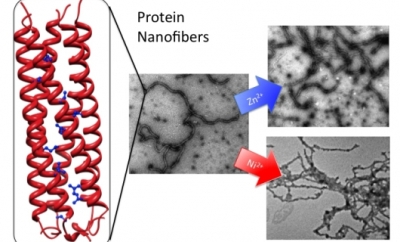A research team at the Polytechnic Institute of New York University (NYU-Poly) has discovered a novel technique for producing nanofibers from proteins, paving the way to advance drug delivery systems for treating Alzheimer's disease, heart disorders and cancers, and help in the recreation of human cartilage, bone and tissue.

Moreover, this technique when applied differently can be used to develop smaller and more powerful microprocessors for next-generation consumer electronic devices and computers. The study findings have been reported online in Advanced Functional Materials. Primary investigator of the study was Susheel K. Gunasekar, a student of Jin Montclare, Head of Protein Engineering and Molecular Design Lab at the Department of Chemical and Biological Sciences of the NYU-Poly.
Primary research was conducted in the lab, while secondary research was carried out at the Department of Chemistry and Biochemistry of the Hunter College. Other researchers involved in the study were Luona Anjia and Professor Hiroshi Matsui. During a study on some cylinder-shaped proteins obtained from cartilage oligomeric matrix protein (COMP), Gunasekar discovered that high concentrations of these alpha helical coiled-coil proteins instinctively teamed up and self-assembled to form nanofibers.
Montclare explained that based on these results, the team planned to conduct a sequence of experiments to study the possibility of controlling the formation of nanofibers and their ability to bond with tiny molecules, which will be accommodated inside the protein's cylinder. The team was particularly interested in curcumin molecules. When metal-recognizing amino acids were added to the coiled-coil protein, the nanofibers changed their shapes when metals such as nickel and zinc were added to the protein.
The addition of zinc allowed the nanofibers to grasp more curcumin molecules, while the addition of nickel changed the nanofibers into clumped mats, activating the release of the curcumin molecules.
According to Montclare, the research team’s next step is to produce scaffolds of nanofibers, which can be utilized to trigger the recreation of human stem cells through embedded vitamin A, and cartilage and bone through embedded vitamin D.